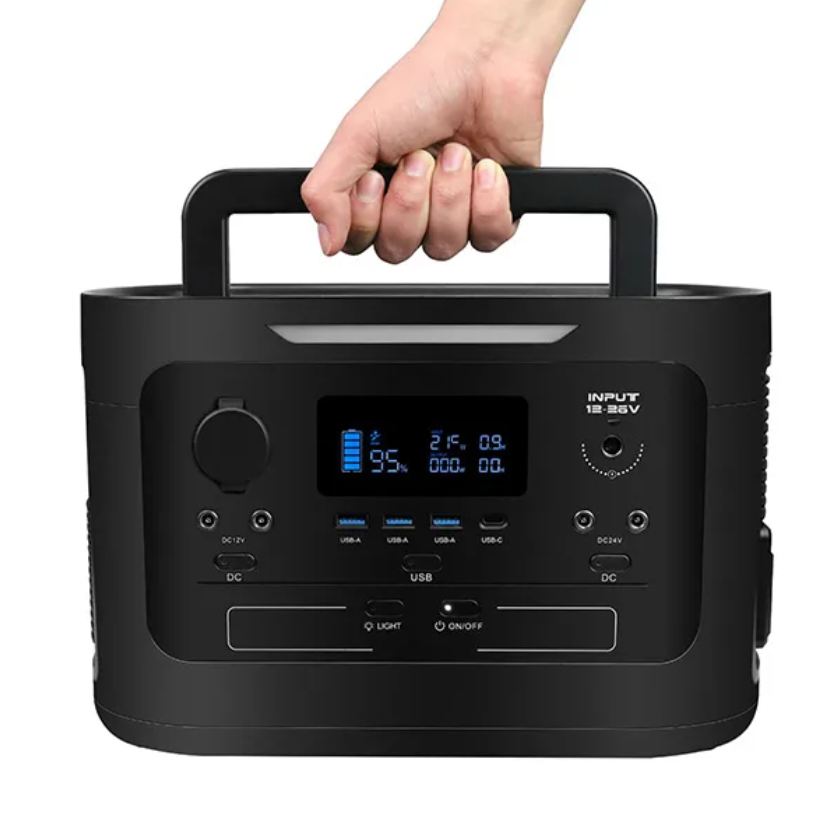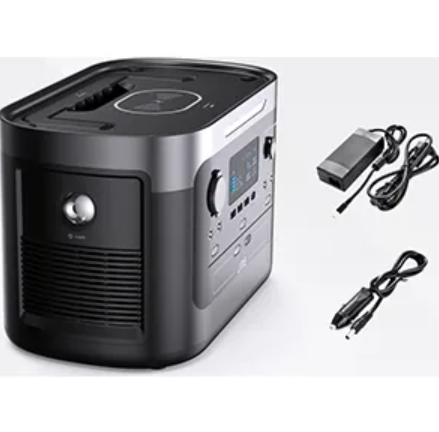Together for An Electric Future.
In today’s world, where portability and reliability are paramount, portable power stations have become indispensable tools for many people. Whether you’re an outdoor enthusiast, a camper, or someone looking to be prepared for unexpected power outages, these devices offer invaluable backup power. However, as with any investment, proper care and maintenance are crucial to ensure that your portable power station performs optimally for years to come. This article will explore best practices for maintaining and storing your portable power station, tips for safe usage, common mistakes to avoid, and why regular maintenance and battery checks are essential.
To get the most out of your portable power station, understanding how to store and maintain it is just as important as knowing how to use it. Proper storage and maintenance help extend the life of the battery and ensure that the unit remains fully functional when you need it most. Let’s take a closer look at some key practices that will keep your power station in top condition.
The longevity of your portable power station greatly depends on how you store it. Always keep it in a cool, dry location, away from direct sunlight and extreme temperatures. Exposure to heat can degrade battery performance, while freezing temperatures can diminish its ability to hold a charge. Ideally, store the unit in a room with a temperature range of 50°F to 77°F (10°C to 25°C), as these conditions are best for lithium-ion batteries, which are commonly used in portable power stations.

If you don’t plan on using your portable power station for an extended period, charge the battery to around 50% before storing it. Lithium-ion batteries lose their capacity faster when left fully charged or completely discharged for long periods. Therefore, a 50% charge ensures the battery remains healthy during storage. Additionally, it’s a good practice to check and recharge the battery every three to six months to maintain its overall condition.
Dust and debris can easily accumulate on your power station, which may clog vents and cooling fans, potentially causing overheating. Regularly clean the exterior with a soft, dry cloth to remove dust and debris. Be cautious not to let dirt enter the charging ports or vents, as this could affect the device’s performance or even cause electrical short circuits.
Proper usage is key to getting the most out of your portable power station. In addition to maintenance, understanding the best practices for charging, using the device, and managing its load are essential for optimal performance. Here’s a closer look at how to safely operate your power station to avoid damaging it and to ensure it remains reliable when you need it most.
When using a portable power station, understanding its features and limitations is essential. Start by reading the user manual thoroughly to familiarize yourself with the device's specifications and safety guidelines. This includes understanding the maximum output wattage, charging rates, and compatibility with various devices.
To avoid damaging your power station, always use the charger that comes with the unit or one that meets the manufacturer’s recommended specifications. Using an incompatible charger can lead to issues like overcharging, which can damage the battery. Similarly, avoid charging the power station in extreme heat or cold, as this can affect its performance and lifespan. Always charge in a well-ventilated area to prevent overheating.
When charging devices, ensure that the total power consumption does not exceed the power station’s maximum output. Overloading the power station by running too many high-power devices simultaneously can cause it to overheat or shut down. For instance, always check the wattage requirements of your devices and distribute the load evenly to ensure the power station operates within safe parameters.
Even with the best practices in mind, there are several common mistakes that users often make. These mistakes can have long-term effects on the power station’s performance and lifespan. Let’s review some of the most frequent errors and learn how to avoid them.
One of the most common mistakes when using a portable power station is exceeding its wattage limit. Each unit has a specific output capacity, and exceeding this can cause serious damage. For example, a power station rated for 500W can’t safely power devices that draw 600W or more. Always check the power requirements of your devices before connecting them to avoid overloading the system.
Just like any electronic device, portable power stations require regular maintenance to function efficiently. Many users neglect periodic checks, such as inspecting the battery’s charge and testing the output. Regular maintenance ensures that your power station remains in top condition. It also allows you to catch any issues early, such as faulty ports, degraded battery capacity, or other potential problems.
While many portable power stations are designed to be rugged and durable, prolonged exposure to harsh conditions—like rain, snow, or excessive heat—can still cause damage. Always store and use the power station in a protective case or cover, especially when not in use. This will help shield it from moisture, dust, and temperature extremes that could shorten its lifespan.

Regular maintenance is not just a good idea, it’s an essential part of keeping your portable power station in working order. The more you care for your power station, the more reliable it will be, especially during emergency situations. Let’s explore why regular maintenance and battery checks are so important, and how these practices can save you from costly repairs or replacements in the future.
Regularly checking the battery’s health is one of the most important aspects of maintaining your portable power station. Over time, the battery’s ability to hold a charge will naturally degrade, which can result in reduced performance. Perform regular checks on the battery's voltage and discharge rates to ensure that it continues to operate efficiently. If you notice a significant drop in battery life or the unit starts taking longer to charge, it might be time to replace the battery.
Beyond checking the battery, routine cleaning and inspection are key to maintaining optimal performance. Dust, dirt, and moisture can build up over time, affecting the internal components, especially the cooling fans and charging ports. Every few months, take the time to carefully clean the device and inspect the ports and cables for wear and tear. This helps to prevent malfunctions before they become more serious issues.
Testing the power output of the station is another crucial maintenance task. Use a multimeter or a compatible load tester to check that the unit is providing the correct output voltage and current. If you notice irregularities, such as a drop in output power or intermittent issues, this could be a sign of a problem with the battery, the inverter, or other internal components. Early detection can help prevent major failures and ensure the power station remains reliable in emergency situations.
Maximizing the lifespan of your portable power station is not only about using it properly, but also maintaining it with regular checks, cleaning, and proper storage. Avoiding common mistakes, such as overloading the system or neglecting battery health, will ensure that your power station continues to serve you reliably in both everyday and emergency situations. By taking a proactive approach to maintenance, you can extend the longevity of your device, optimize its performance, and prevent costly repairs down the line.
For customized and high-performance battery solutions tailored to your specific needs, trust RHY—China’s leading lithium battery manufacturer. RHY is committed to delivering reliable, safe, and efficient energy solutions.Our expansive product range includes cutting-edge power tool batteries, garden tool batteries, vacuum cleaner batteries, electric bike batteries, portable power stations, battery chargers, and an array of other innovative solutions. At RHY Battery, we're dedicated to powering your devices with reliability, performance, and sustainability in mind.